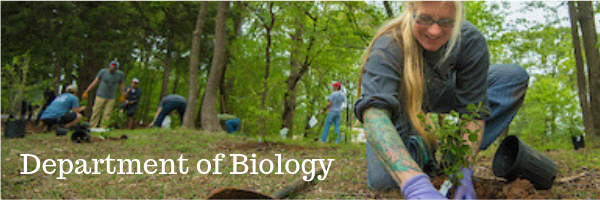
Faculty and Student Publications
Document Type
Article
Publication Date
7-14-2020
Abstract
Introductions and invasions by fungi, especially pathogens and mycorrhizal fungi, are widespread and potentially highly consequential for native ecosystems, but may also offer opportunities for linking microbial traits to their ecosystem functions. In particular, treating ectomycorrhizal (EM) invasions, i.e., co-invasions by EM fungi and their EM host plants, as natural experiments may offer a powerful approach for testing how microbial traits influence ecosystem functions. Forests dominated by EM symbiosis have unique biogeochemistry whereby the secretions of EM plants and fungi affect carbon (C) and nutrient cycling; moreover, particular lineages of EM fungi have unique functional traits. EM invasions may therefore alter the biogeochemistry of the native ecosystems they invade, especially nitrogen (N) and C cycling. By identifying “response traits” that favor the success of fungi in introductions and invasions (e.g., spore dispersal and germination) and their correlations with “effect traits” (e.g., nutrient-cycling enzymes) that can alter N and C cycling (and affect other coupled elemental cycles), one may be able to predict the functional consequences for ecosystems of fungal invasions using biogeochemistry models that incorporate fungal traits. Here, we review what is already known about how EM fungal community composition, traits, and ecosystem functions differ between native and exotic populations, focusing on the example of EM fungi associated with species of Pinus introduced from the Northern into the Southern Hemisphere. We develop hypotheses on how effects of introduced and invasive EM fungi may depend on interactions between soil N availability in the exotic range and EM fungal traits.We discuss how such hypotheses could be tested by utilizing Pinus introductions and invasions as a model system, especially when combined with controlled laboratory experiments. Finally, we illustrate how ecosystem modeling can be used to link fungal traits to their consequences for ecosystem N and C cycling in the context of biological invasions, and we highlight exciting avenues for future directions in understanding EM invasion.
Relational Format
Article
Recommended Citation
Hoeksema, J. D., Averill, C., Bhatnagar, J. M., Brzostek, E., Buscardo, E., Chen, K.-H., Liao, H.-L., Nagy, L., Policelli, N., Ridgeway, J., Rojas, J. A., & Vilgalys, R. (2020). Ectomycorrhizal plant-fungal co-invasions as natural experiments for connecting plant and fungal traits to their ecosystem consequences. Frontiers in Forests and Global Change, 3, 84. https://doi.org/10.3389/ffgc.2020.00084
DOI
10.3389/ffgc.2020.00084
Accessibility Status
Searchable text


Comments
This article was a recipient of the Fall 2020 Open Access Fund from the University of Mississippi Libraries.